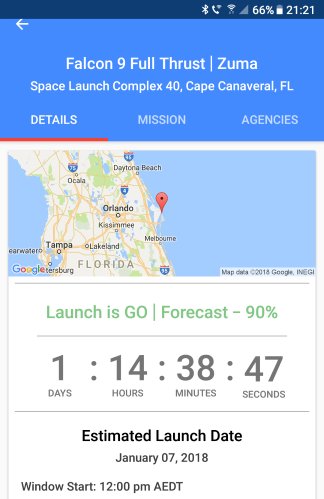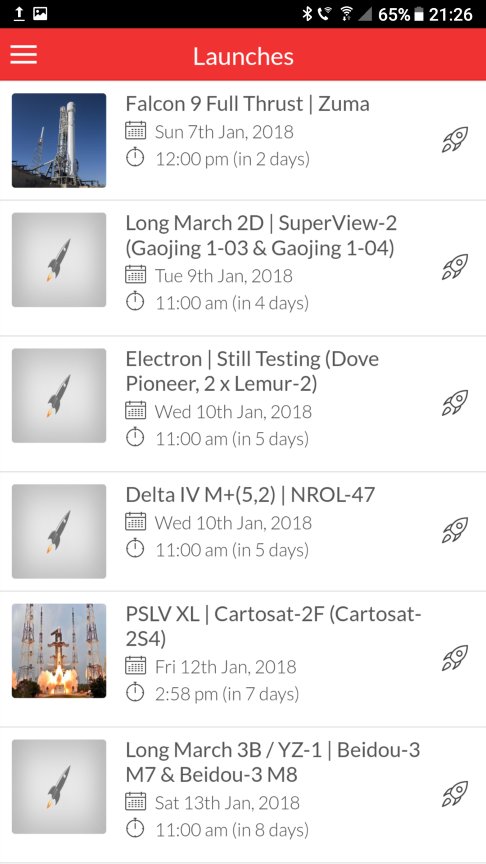Some interesting detail on today's Falcon 9 launch.
Stats
1st launch of 2018
2nd launch attempt of this mission
3rd classified launch for SpaceX
26th landing attempt, and if successful, the 21st successful landing, the 17th consecutive successful landing and the 8th successful landing on land.
28th launch out of SLC 40 and 2nd after the the Amos 6 incident
47th launch of F9, 27th of F9 v1.2
Primary Mission: Deployment of payload into correct orbit
The primary mission for this launch will be to deploy the classified Zuma payload into the correct Low Earth Orbit. Almost nothing is known about the payload, including the customer for the launch. The only thing that is known is that the payload was provided by Northrop Grumman. As usual, the webcast will only cover the flight until stage separation, and will then conclude shortly after the landing of the booster.
Secondary Mission: Landing Attempt
As usual for low energy missions with a light payload, the booster of this flight will attempt to land at LZ-1, the first landing pad built by SpaceX on the former LC-13. After stage separation, the booster will flip around using its nitrogen thrusters, and then re-ignite three engines in the 'boostback burn', reversing direction so that it is falling back towards the cape rather than out towards the ocean. Shortly after the boostback burn concludes, the four gridfins will deploy.
These fins will help the booster to steer when the atmosphere becomes dense enough. As the booster falls more rapidly through the thickening air, it will begin to compress more and more air in front of it, in what would normally become a shock wave of extremely hot plasma.
However, about 3 minutes and 45 seconds after the start of the boostback burn, and before this occurs, the booster will again re-ignite three engines for the 'entry burn'. This will force the mounting pressure and heat away from the delicate engine bells, slowing the booster abruptly so that it does not experience the peak effects of re-entry heating.
Slightly more than a minute after the entry burn starts, the center engine of the booster will ignite for a fourth time in the 'landing burn', which will slow the booster for a soft touchdown about 9km south of where it took off, on the concrete pad of LZ-1. The booster's four landing legs will deploy a few seconds before touchdown.
]
.... Soooo when is the next Launch... You mentioned on the 3rd that it was delayed for 24hrs?







